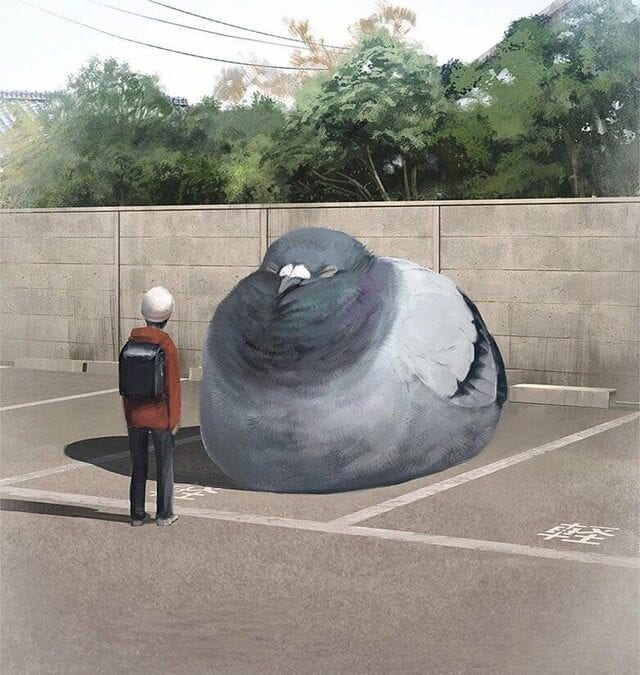
by Pigeon Patrol | Jan 25, 2022 | Columbidae, Doves, history of pigeons, MBCA, pet bird
Turning is crucial for animals, particularly during predator–prey interactions and to avoid obstacles. For flying animals, turning consists of changes in (i) flight trajectory, or path of travel, and (ii) body orientation, or 3D angular position. Changes in flight trajectory can only be achieved by modulating aerodynamic forces relative to gravity. How birds coordinate aerodynamic force production relative to changes in body orientation during turns is key to understanding the control strategies used in avian maneuvering flight. We hypothesized that pigeons produce aerodynamic forces in a uniform direction relative to their bodies, requiring changes in body orientation to redirect those forces to turn. Using detailed 3D kinematics and body mass distributions, we examined net aerodynamic forces and body orientations in slowly flying pigeons (Columba livia) executing level 90° turns. The net aerodynamic force averaged over the downstroke was maintained in a fixed direction relative to the body throughout the turn, even though the body orientation of the birds varied substantially. Early in the turn, changes in body orientation primarily redirected the downstroke aerodynamic force, affecting the bird’s flight trajectory. Subsequently, the pigeon mainly reacquired the body orientation used in forward flight without affecting its flight trajectory. Surprisingly, the pigeon’s upstroke generated aerodynamic forces that were approximately 50% of those generated during the downstroke, nearly matching the relative upstroke forces produced by hummingbirds. Thus, pigeons achieve low speed turns much like helicopters, by using whole-body rotations to alter the direction of aerodynamic force production to change their flight trajectory.
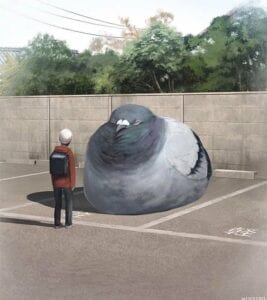
Source
Pigeon Patrol Products & Services is the leading manufacturer and distributor of bird deterrent (control) products in Canada. Pigeon Patrol products have solved pest bird problems in industrial, commercial, and residential settings since 2000, by using safe and humane bird deterrents with only bird and animal friendly solutions. At Pigeon Patrol, we manufacture and offer a variety of bird deterrents, ranging from Ultra-flex Bird Spikes with UV protection, Bird Netting, 4-S Bird Gel and the best Ultrasonic and audible sound devices on the market today.
Voted Best Canadian wholesaler for Bird Deterrent products ten years in a row.
Contact us at 1- 877– 4– NO-BIRD, (604) 585-9279 or visit our website at www.pigeonpatrol.ca
Pigeon/Pigeon Patrol / Pigeons Roosting / Vancouver Pigeon Control /Bird Spikes / Bird Control / Bird Deterrent / Pigeon Deterrent? Surrey Pigeon Control / Pest /Seagull deterrent / Vancouver Pigeon Blog / Birds Inside Home / Pigeons in the cities / Ice Pigeons/ What to do about pigeons/ sparrows , Damage by Sparrows, How To Keep Raccoons Away, Why Are Raccoons Considered Pests/ De-fence / Pigeon Nesting/ Bird Droppings / Pigeon Dropping/ woodpecker control/ Professional Bird Control Company/ Keep The Birds Away/ Birds/rats/ seagull/pigeon/woodpecker/ dove/sparrow/pidgeon control/pidgeon problem/ pidgeon control/flying rats/ pigeon Problems/ bird netting/bird gel/bird spray/bird nails/ bird guard
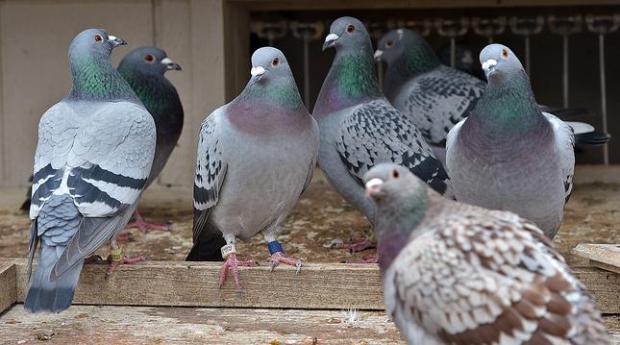
by Pigeon Patrol | Jan 4, 2022 | Columbidae, Doves, history of pigeons, MBCA, pet bird, Pigeon Control
Spotting a bird’s nest can fill families with delight – but what about when the inhabitants of a nest on your property are notorious pest birds?
More specifically: should you be worried about nesting pigeons on your property?
Pigeons have a reputation – and not entirely unfairly – as flying rats. As this is down to their propensity to spread disease, which, in itself, justifies any concerns you may have over finding a pigeon nest in your garden.
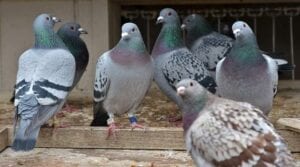
Can I move a pigeon nest?
Like all wild birds, nesting pigeons are protected by the law and can only be moved in exceptional circumstances.
It is considered an offence to move a nest during nesting season, which usually runs from spring through the summer.
These same rules apply to pigeons, so if you have serious concerns it is essential to seek professional advice.
Any attempt to move a bird’s nest should only be made when you are sure that the fledglings have left and it is dormant.
With pigeons, however, this can be trickier as they can often lay eggs three times throughout the summer and do not as a rule nest and lay eggs seasonally. This means that a nest could theoretically be in use year-round.
Why should I be worried about nesting pigeons?
The main concern people usually have relating to pigeons is the spread of disease. They have been linked to the spread of diseases such as histoplasmosis, which can cause serious lung problems, and salmonella.
This is spread through contact with pigeon droppings – or breathing in airborne particles.
Obviously when a pigeon is nesting close to the living area of your home, or in an area used for preparing or eating food this is more of a risk.
Likewise, many homeowners will be unhappy to discover pigeons nesting in their roof due to concerns about the spread of disease.
However, this is less of a problem if a pigeon’s nest has been found in your garden.
Along with the risk of disease, pigeons’ pest bird status owes something to the noise and mess these birds bring with them. Pigeon droppings can cause a hazard on walkways, encourage weeds and moss to grow on roofs and look unsightly. They are also noisy birds, which, in numbers can cause a noise nuisance around your home.
What should I do if pigeons are nesting on my property?
If a nest is established in an area where there are no serious safety concerns you will need to allow the eggs to hatch and fledgling birds to leave before you take action.
It is always advisable to seek help from a pest bird control expert, such as Total Bird Control to ensure that you act within the law. The best way to prevent pigeons returning to the property is to put in place pigeon deterrents, such as spikes and netting
Source
Pigeon Patrol Products & Services is the leading manufacturer and distributor of bird deterrent (control) products in Canada. Pigeon Patrol products have solved pest bird problems in industrial, commercial, and residential settings since 2000, by using safe and humane bird deterrents with only bird and animal friendly solutions. At Pigeon Patrol, we manufacture and offer a variety of bird deterrents, ranging from Ultra-flex Bird Spikes with UV protection, Bird Netting, 4-S Bird Gel and the best Ultrasonic and audible sound devices on the market today.
Voted Best Canadian wholesaler for Bird Deterrent products ten years in a row.
Contact us at 1- 877– 4– NO-BIRD, (604) 585-9279 or visit our website at www.pigeonpatrol.ca
Pigeon/Pigeon Patrol / Pigeons Roosting / Vancouver Pigeon Control /Bird Spikes / Bird Control / Bird Deterrent / Pigeon Deterrent? Surrey Pigeon Control / Pest /Seagull deterrent / Vancouver Pigeon Blog / Birds Inside Home / Pigeons in the cities / Ice Pigeons/ What to do about pigeons/ sparrows , Damage by Sparrows, How To Keep Raccoons Away, Why Are Raccoons Considered Pests/ De-fence / Pigeon Nesting/ Bird Droppings / Pigeon Dropping/ woodpecker control/ Professional Bird Control Company/ Keep The Birds Away/ Birds/rats/ seagull/pigeon/woodpecker/ dove/sparrow/pidgeon control/pidgeon problem/ pidgeon control/flying rats/ pigeon Problems/ bird netting/bird gel/bird spray/bird nails/ bird guard

by Pigeon Patrol | Jan 4, 2022 | Bird Deterrent Products, Bird Law, Bird Netting, Bird Spikes, Columbidae, Doves
In the UK, pigeons seem to be everywhere you go and if you find them on your roof – at home or work – chances are, you’ve heard them too. Not only are pigeons notoriously noisy but they can create a whole lot of mess and expensive damage to your roof tiles. What’s more, their faeces can carry diseases and draw vermin such as flies and rats to your property, which can leave you with yet another problem.
How to get rid of pigeons/birds: Can home remedies work?
There are some widely recommended home remedies to get rid of pigeons and other birds, but these are generally ineffective in practice.
Can spices get rid of pigeons?
Spices such as chilli powder, pepper and cinnamon have been touted as pigeon/bird repellents. Unfortunately, they’re far from an effective solution – you’ll also need to apply them very frequently as they get washed away with rain and lose their potency. Going up to your roof every weekend to sprinkle more seasoning is less than ideal, to say the least.
Do decoy birds of prey scare pigeons?
Decoy statues of birds of prey or lightweight kites have been known to be used as pigeon/bird deterrents to try and stop pigeons nesting on your roof. That said, even if you do initially have success with decoys they will only be effective for a short period of time because birds get used to their fixed placement – and when the birds approach they will see that they’re just an object.
Will spreading sticky stuff get rid of pigeons?
Sticky substances, such as an environmentally safe commercial gel-repellent or honey, are another temporary solution that’s been tried to prevents pigeons and other birds from perching on your roof, due to its slippery layer.
Just as with the spices, however, this method must be reapplied to maintain its effectiveness – and it’s not very effective in the first place. It’s not only inconvenient but also potentially dangerous to keep going on your roof, as you could hurt yourself and possibly damage your roof even further. If you’re unsure, speak to the experts who can keep birds away from your roof.
Spraying pigeons with water
For a solution which works all of two minutes, you can spray pigeons with a water hose. This is method simply scares them away for the time being but they’ll happily return in no time to nest on your roof again.
How to keep pigeons away from your garden
Ultrasonic devices to keep pigeons/birds away
These devices can be installed by pest control companies and are effective bird repellers that produce sound waves we humans can’t hear, but to pesky pigeons, and other birds – it’s irksome. This device can be effective and the high frequency will be a sure way to make birds find another place to reside.
Can my pets deter pigeons?
If you have a dog or cat, they may help out with the bird problem to an extent, but the odds are that the birds won’t be too put off due to the height advantage they have over your beloved pets.
Will using a scarecrow get rid of birds?
Installing a scarecrow in your front or back garden – wherever the pigeons will see this figure – is a similar idea to the bird of prey decoy. It also has a similar amount of effectiveness – very little – particularly once the birds get used to it.
Why are there pigeons on my roof?
If you’ve noticed an unusual amount of pigeons on your roof, it’s likely they have a nearby food and water source. If you’re aware of these sources, remove them – it’s important not to feed pigeons and birds if you wish to get rid of them. Pigeons and all birds in general love grass seeds, berries and your pet’s food, so consider laying fresh turf on your lawn, replace fruit bearing trees with fern, oak, pine or maple trees and keep your pet’s food indoors.
Access points to your attic might be the reason you’re seeing so many pigeons on your roof. This area provides them with the ideal breeding ground where they’re warm and safe from predators.
Basic DIY bird prevention measures
- Remove fruit-bearing trees
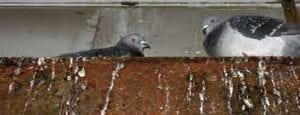
When should I call the pest professionals for bird control?
If your home remedies aren’t working, it’s important to call your local pest controllers who can put a stop to your pest peeves.
How do professionals keep birds off your roof?
- Bird netting – to prevent pigeons from colonising, bird netting is an effective method. Netting comes in a whole range of sizes so this preventative can be made suitable to any dimensions of a building. To exclude pigeons, starlings or sparrows we will ensure the grids on the netting are the optimal size to enforce the exclusion of your pest problems. This method can be used to protect building fascias, flat roofs, balconies, statues and decorative embellishments where birds can potentially nest.
- Bird spikes – are in fact a humane bird control solution and highly effective too. This piece of equipment can be installed on any linear surface, where pigeons and other birds may nest.
- Bird wire – also known as anti-pigeon wire is ideal for large establishments such as cathedrals, churches and banks offering a discrete solution that will eliminate any pigeon or bird infestation. This method has a low visual impact and will subtly tackle the problem at hand.
- Electric bird deterrent system – this is used around heavily colonised buildings and measures a discreet 8mm. Birds experience a small shock when a bird of any species lands on the building. This does not hurt the bird, it simply encourages the bird to move elsewhere.
Keeping pigeons away from your garden and balcony
Finding pigeon or any bird poop on your garden furniture, patio or balcony can be extremely irritating and hard to clean. It’s likely you will have to turn to a professional who can implement a more permanent solution.
Source
Pigeon Patrol Products & Services is the leading manufacturer and distributor of bird deterrent (control) products in Canada. Pigeon Patrol products have solved pest bird problems in industrial, commercial, and residential settings since 2000, by using safe and humane bird deterrents with only bird and animal friendly solutions. At Pigeon Patrol, we manufacture and offer a variety of bird deterrents, ranging from Ultra-flex Bird Spikes with UV protection, Bird Netting, 4-S Bird Gel and the best Ultrasonic and audible sound devices on the market today.
Voted Best Canadian wholesaler for Bird Deterrent products ten years in a row.
Contact us at 1- 877– 4– NO-BIRD, (604) 585-9279 or visit our website at www.pigeonpatrol.ca
Pigeon/Pigeon Patrol / Pigeons Roosting / Vancouver Pigeon Control /Bird Spikes / Bird Control / Bird Deterrent / Pigeon Deterrent? Surrey Pigeon Control / Pest /Seagull deterrent / Vancouver Pigeon Blog / Birds Inside Home / Pigeons in the cities / Ice Pigeons/ What to do about pigeons/ sparrows , Damage by Sparrows, How To Keep Raccoons Away, Why Are Raccoons Considered Pests/ De-fence / Pigeon Nesting/ Bird Droppings / Pigeon Dropping/ woodpecker control/ Professional Bird Control Company/ Keep The Birds Away/ Birds/rats/ seagull/pigeon/woodpecker/ dove/sparrow/pidgeon control/pidgeon problem/ pidgeon control/flying rats/ pigeon Problems/ bird netting/bird gel/bird spray/bird nails/ bird guard
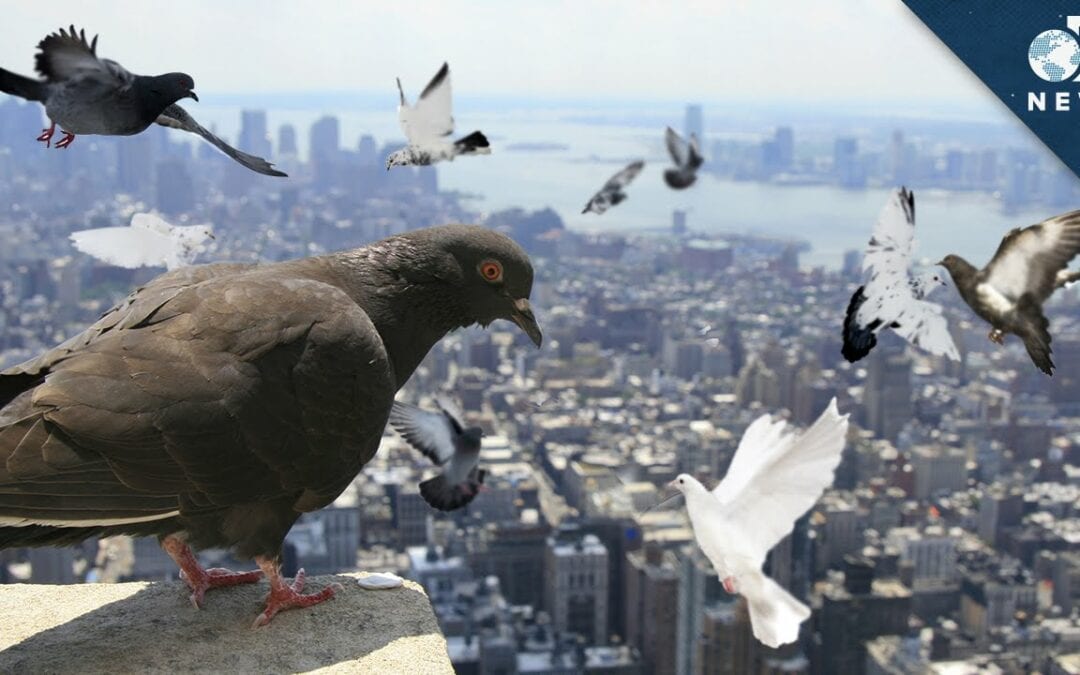
by Pigeon Patrol | Dec 24, 2021 | 4-S Gel Bird repellent, Animal Deterrent Products, Doves, history of pigeons, Pigeon Predators, Pigeon Spikes
In urbanized areas, pigeons are part of the daily life of city dwellers. We see them strolling on the sidewalks without fear of passers-by and cooing under bridges over passing cars. As such, the pigeon is not really a problematic bird species, but when perched, it can release an impressive amount of droppings on anything below. If you are facing this problem, whether inside or outside your home and want to deal with it, here’s how to clean up pigeon droppings.

Preliminary measures before cleaning pigeon droppings
Cleaning pigeon droppings involves removing the guano from the outside or inside of a building after the animal has been removed. Pigeon droppings are generally not harmful to health, except in extreme cases. On the other hand, they can strongly affect the appearance of a building, cause odours and attract insects. Except in certain unusual situations, you can remove the pigeon droppings yourself, unless the extent of the problem is beyond your control or you are experiencing breathing problems. At such times, it may be appropriate to hire the services of a residential exterminator.
Whether the pigeon droppings to be cleaned are on the front of your building or in your attic, the same process can be used. But before you rush to buy products or start cleaning the area, a health and safety risk assessment is essential, especially if the work will be done at height.
It is also recommended to take certain preliminary measures. A face mask, disposable coveralls and rubber gloves must be worn at all times, as well as safety glasses and a good pair of boots.
Products used to kill bacteria in pigeon droppings
There are many cleaning products developed especially for bird droppings. First, there are disinfectants, designed to kill bacteria and organisms, and simple cleaning agents, which, as their name suggests, are simply designed to clean. In most cases, a bucket of hot soapy water containing a little household detergent is a simple but ideal cleaning solution.
Cleaning pigeon droppings is no different from any other thorough cleaning work. With the right equipment, the work will be done quickly. To remove the guano on window sills and the like, a scraper is all you need to remove it. Moisten overly dry guano to soften it before removing it and reduce the amount of dust thrown into the air. Once all pigeon droppings have been scraped and removed from the surface, simply wash the area with a brush and the cleaning solution mentioned above.
What should be done with the excrement next? Small quantities of pigeon guano can be safely disposed of in a domestic or commercial waste bin.
When pigeon droppings become too overwhelming
Urban life means living with a host of animal species, including pigeons. Although this bird is not a threat to human health, the droppings it produces are never desirable, either outside or inside a building. Fortunately, with the right equipment, it is quite easy to remove pigeon droppings.
Source
Pigeon Patrol Products & Services is the leading manufacturer and distributor of bird deterrent (control) products in Canada. Pigeon Patrol products have solved pest bird problems in industrial, commercial, and residential settings since 2000, by using safe and humane bird deterrents with only bird and animal friendly solutions. At Pigeon Patrol, we manufacture and offer a variety of bird deterrents, ranging from Ultra-flex Bird Spikes with UV protection, Bird Netting, 4-S Bird Gel and the best Ultrasonic and audible sound devices on the market today.
Voted Best Canadian wholesaler for Bird Deterrent products ten years in a row.
Contact us at 1- 877– 4– NO-BIRD, (604) 585-9279 or visit our website at www.pigeonpatrol.ca
Pigeon/Pigeon Patrol / Pigeons Roosting / Vancouver Pigeon Control /Bird Spikes / Bird Control / Bird Deterrent / Pigeon Deterrent? Surrey Pigeon Control / Pest /Seagull deterrent / Vancouver Pigeon Blog / Birds Inside Home / Pigeons in the cities / Ice Pigeons/ What to do about pigeons/ sparrows , Damage by Sparrows, How To Keep Raccoons Away, Why Are Raccoons Considered Pests/ De-fence / Pigeon Nesting/ Bird Droppings / Pigeon Dropping/ woodpecker control/ Professional Bird Control Company/ Keep The Birds Away/ Birds/rats/ seagull/pigeon/woodpecker/ dove/sparrow/pidgeon control/pidgeon problem/ pidgeon control/flying rats/ pigeon Problems/ bird netting/bird gel/bird spray/bird nails/ bird guard

by Pigeon Patrol | Dec 16, 2021 | 4-S Gel Bird repellent, Animal Deterrent Products, Bird Deterrent Products, Bird Law, Bird Netting, Bird Spikes, Columbidae, Doves, history of pigeons
Many birds travel in flocks, sometimes migrating over thousands of miles. But how do the birds decide who will lead the way? Researchers reporting in the Cell Press journal Current Biology on November 25 now have some new insight based on studies in homing pigeons. For pigeons, it seems, leadership is largely a question of speed.
“This changes our understanding of how the flocks are structured and why flocks of this species have consistent leadership hierarchies,” says Dora Biro of the University of Oxford.
Previous studies had shown that flock leadership is unrelated to social dominance. Giving followers extra training flights doesn’t promote them to a position of leadership, either. The new findings offer an elegantly simple explanation for the phenomenon of leadership in birds, with important implications for how spatial knowledge is generated and retained in navigating flocks.
While many birds travel in flocks, homing pigeons are domestic and more easily studied than most. “We can control the composition of the flocks and the starting points for their homeward journeys,” says Benjamin Pettit, the first author of the new study. “We also have a good understanding of their individual spatial cognition, in particular how their homing routes develop over repeated flights in the same area.”
Recent developments in sensor technology also make it possible to explore with exquisite precision how pigeon flocks are coordinated. The latest GPS loggers allow the researchers to track not only the birds’ overall routes, but also the sub-second time delays with which they react to each other while flying as a flock.
In the new study, the researchers compared pigeons’ relative influence over flock direction to their solo flight characteristics. Their studies showed that a pigeon’s degree of leadership could be predicted by its speed in earlier flights.

In solo flights, leaders were no better than followers in forging a straight path. In other words, they didn’t excel in navigation ability, at least not at first. When the researchers tested the birds individually after a series of flock flights, however, they found that leaders had learned straighter homing routes than followers.
“Some birds are naturally faster and consistently get to the front, where they end up doing more of the navigation, which means on future flights they know the way better,” Biro says. “You can compare this to a ‘passenger-driver’-like effect: drivers in a car have to pay attention while passengers are often unable to recall the route they were driven along, especially if they remained passive in the navigation process.”
While it’s often tempting to take an anthropocentric view of leadership, the findings come as a reminder that leadership can arise as an unavoidable consequence of individual differences within a population. A very simple, self-organizing mechanism–such as that based on variation in speed–is sufficient for leadership to arise. In addition, the new findings offer a mechanism through which leaders can improve in their roles over time, making increasingly better decisions that others can follow.
“Our findings broaden the range of species and situations in which we would expect to see leadership and explain how leadership and competence can naturally come to correlate,” Pettit says.
Source
Pigeon Patrol Products & Services is the leading manufacturer and distributor of bird deterrent (control) products in Canada. Pigeon Patrol products have solved pest bird problems in industrial, commercial, and residential settings since 2000, by using safe and humane bird deterrents with only bird and animal friendly solutions. At Pigeon Patrol, we manufacture and offer a variety of bird deterrents, ranging from Ultra-flex Bird Spikes with UV protection, Bird Netting, 4-S Bird Gel and the best Ultrasonic and audible sound devices on the market today.
Voted Best Canadian wholesaler for Bird Deterrent products ten years in a row.
Contact us at 1- 877– 4– NO-BIRD, (604) 585-9279 or visit our website at www.pigeonpatrol.ca
Pigeon/Pigeon Patrol / Pigeons Roosting / Vancouver Pigeon Control /Bird Spikes / Bird Control / Bird Deterrent / Pigeon Deterrent? Surrey Pigeon Control / Pest /Seagull deterrent / Vancouver Pigeon Blog / Birds Inside Home / Pigeons in the cities / Ice Pigeons/ What to do about pigeons/ sparrows , Damage by Sparrows, How To Keep Raccoons Away, Why Are Raccoons Considered Pests/ De-fence / Pigeon Nesting/ Bird Droppings / Pigeon Dropping/ woodpecker control/ Professional Bird Control Company/ Keep The Birds Away/ Birds/rats/ seagull/pigeon/woodpecker/ dove/sparrow/pidgeon control/pidgeon problem/ pidgeon control/flying rats/ pigeon Problems/ bird netting/bird gel/bird spray/bird nails/ bird guard
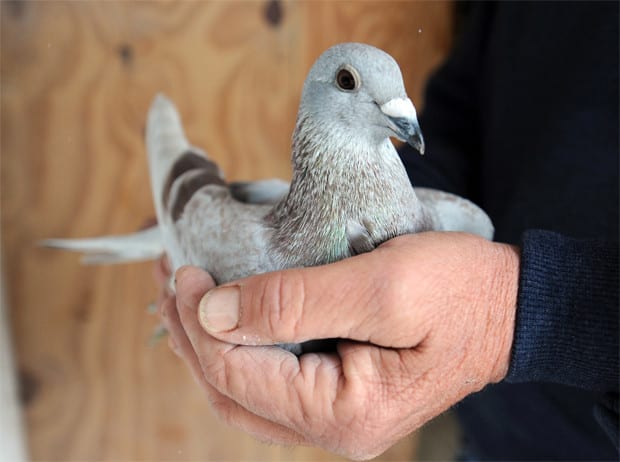
by Pigeon Patrol | Dec 7, 2021 | Bird Spikes, Columbidae, Doves, history of pigeons, MBCA, pet bird, Pigeon Control
Is it dangerous to pick up a bird?
Some birds can bite hard (Northern Cardinals), some can stab (Hairy Woodpeckers), while others can make intimidating noises, But most can’t do any serious damage to a human. Birds do not carry rabies, and are generally at higher risk of catching something from us than vice versa. Wash your hands after handling a bird as a precautionary measure.
But: birds of prey, herons, loons and other birds with strong talons or spear-like beaks can cause serious injury if you do not wear protective gear and take necessary precautions. Please read to the end for specific handling instructions, and do not attempt a rescue if you are not certain you can do so safely.
Two-handed grip for medium-sized birds
Secure the wings by wrapping both your hands around the bird, thumbs on its back, pointing up. Be sure to hold it securely, but be careful not to put pressure on the chest. The bird will instinctively want a place to rest its feet, so let it grab onto your little fingers.
Two-handed grip for small birds
Gently enclose the bird within your hands, leaving room between your fingers to allow the bird to breathe — but not too much room or it will wriggle out.
One-handed grip for small birds
This is similar to the bander’s grip commonly used to stabilize birds for banding (ringing), or to inspect for injuries. Hold the bird’s neck between your index and middle finger while using your thumb and ring finger to secure the wings. Your little finger acts as a perch for the bird’s feet, or you can use your other hand to support the bird from below. If you are not experienced with the bander’s grip, it may be safer to use both hands.
Using a net
A fine-mesh net is often the easiest and safest way to catch a bird. Our volunteers use dollar-store butterfly nets for smaller birds (stick with blue or green nets, avoid red, orange, pink). Nylon fishing nets with large holes are not suitable, as they will not hold a small bird, and risk injuring a larger birds or damaging its feathers.
Gently cover the bird with the net, being careful not to crush the bird’s head, wings or legs with the loop. Hold the net flat against the ground and place one hand over the bird from the outside of the net. Raise the net with that hand, still holding the bird inside the net, and use your other hand to gently extract the bird from the net. Make sure its toes, beak and wings don’t get caught in the netting.
Using a towel, blanket, sweater or jacket
This is usually the easiest way to capture larger birds. Just drop the towel or other piece of fabric over the bird from above, completely covering it. If you cannot cover the whole bird, make sure the head and the wings are covered. Now, just scoop it up in the towel using both hands to ensure that the wings are tucked in.
The towel technique is best for Mourning Doves, because they can shed their feathers to escape, leaving you with a handful of feathers but no bird.
Now what?
Once you have the bird in hand or in a towel or similar, transfer it to a box or, for smaller birds, a plain paper bag, and close the top so the bird cannot escape. The bird may try to fly away even if it badly injured, so please don’t let it. A paper bag does not require air holes, although a box might if it’s airtight.
If you picked up the bird in a towel or similar, make sure its head is uncovered once it’s safely in the box. To do this, or if you need to transfer the bird to another container, please find a small, windowless, enclosed space (e.g. bathroom) so the bird can’t get far if it escapes.
Keep the bird in a dark and quiet place indoors, and do not attempt to give it food or water. Call Safe Wings or another rehabber for further instructions.
Special precautions
Many people worry that birds of prey, such as owls, hawks, falcons and eagles, will bite them. While there’s a very small chance they will, and it can hurt, the real danger lies elsewhere. Raptors have incredibly powerful talons (claws) that they use to grip and kill their prey — and to defend themselves. Do not attempt to handle these birds without thick leather gloves and a thick towel or blanket to protect you from the talons.
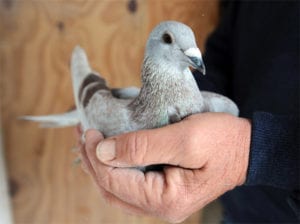
Pigeon in New York City (file / credit: STAN HONDA/AFP/Getty Images)
Never attempt to handle a heron, loon or other bird with a long, spear-like beak without wearing eye protection. They will defend themselves by stabbing at your eyes, which can result in fatal injury. Wearing leather gloves and covering the bird with a thick, large towel or blanket to pick it up will further protect both of you from injury.
In many cases, a sick or injured bird will be too weak to struggle or defend itself. However, a bird in distress may lash out in panic. Please do not attempt to capture a potentially dangerous bird unless you understand and are willing to accept the risks.
Other tips for capturing birds
- Move calmly but deliberately
- Crouch if possible
- Approach from behind, but be mindful not to chase birds towards buildings. (Exception: American Woodcocks should be approached from the front.)
- Act quickly. With the exception of young birds that are learning to fly, almost any wild bird that can be approached needs help.
- Do not wait to see if the bird will fly away. Even badly hurt birds will try to get away if they are in a vulnerable position. Just because they can still fly does not mean they don’t have severe internal injuries.
- Do not mistake helplessness for friendliness. Wild birds are naturally afraid of us (with the exception of young birds that have not yet learned to fear us), so if they appear docile, it’s usually because they have head trauma or another severe injury.
- Stress from excessive handling and noise can kill a bird. Please do not pet an injured bird, sing to it, let your children play with it, or let your dog sniff it. Just get it to a rehabber as quickly and as quietly as possible.
Source
Pigeon Patrol Products & Services is the leading manufacturer and distributor of bird deterrent (control) products in Canada. Pigeon Patrol products have solved pest bird problems in industrial, commercial, and residential settings since 2000, by using safe and humane bird deterrents with only bird and animal friendly solutions. At Pigeon Patrol, we manufacture and offer a variety of bird deterrents, ranging from Ultra-flex Bird Spikes with UV protection, Bird Netting, 4-S Bird Gel and the best Ultrasonic and audible sound devices on the market today.
Voted Best Canadian wholesaler for Bird Deterrent products ten years in a row.
Contact us at 1- 877– 4– NO-BIRD, (604) 585-9279 or visit our website at www.pigeonpatrol.ca
Pigeon/Pigeon Patrol / Pigeons Roosting / Vancouver Pigeon Control /Bird Spikes / Bird Control / Bird Deterrent / Pigeon Deterrent? Surrey Pigeon Control / Pest /Seagull deterrent / Vancouver Pigeon Blog / Birds Inside Home / Pigeons in the cities / Ice Pigeons/ What to do about pigeons/ sparrows , Damage by Sparrows, How To Keep Raccoons Away, Why Are Raccoons Considered Pests/ De-fence / Pigeon Nesting/ Bird Droppings / Pigeon Dropping/ woodpecker control/ Professional Bird Control Company/ Keep The Birds Away/ Birds/rats/ seagull/pigeon/woodpecker/ dove/sparrow/pidgeon control/pidgeon problem/ pidgeon control/flying rats/ pigeon Problems/ bird netting/bird gel/bird spray/bird nails/ bird guard











